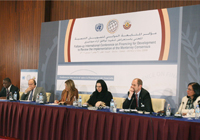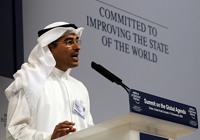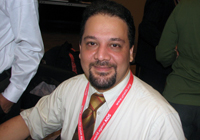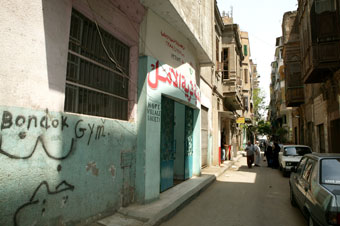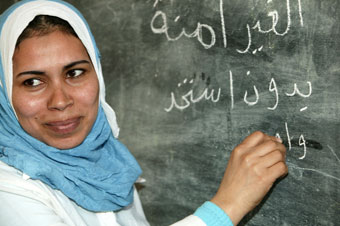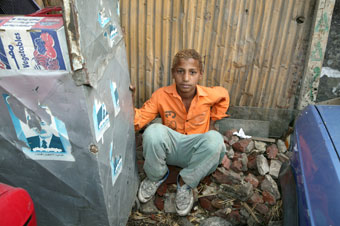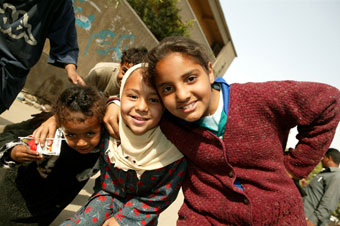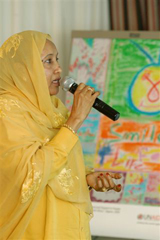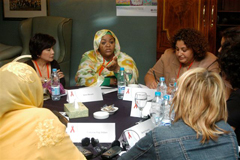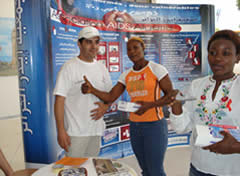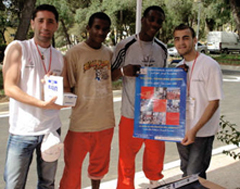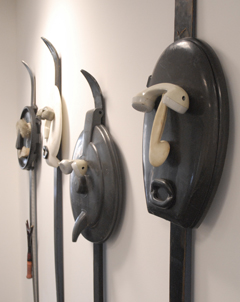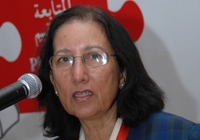
Dr Renu Chahil-Graf, Director, UNAIDS Regional Support Team for the Middle East and North Africa
Credit: UNAIDS
Across North Africa and the Middle East, UNAIDS estimates that 35,000 people acquired HIV in 2007, bringing to 380,000 the number of people living with HIV. An estimated 25,000 died of AIDS-related illness in the same year. Effectively coordinated HIV prevention, treatment, care and support strategies are vital to the reduction of these figures.
In order to get a clearer picture of the challenges to leading and coordinating an AIDS response in the Middle East and North Africa (MENA) regions, an assessment of the National AIDS Coordinating Authorities (NACA) in 16 countries was recently carried out by the UNAIDS Regional Support Team.
“Having insights into the strengths of their national responses helps country partners identify opportunities for improved coordination,” said Dr Renu Chahil-Graf, Director, UNAIDS Regional Support Team for the Middle East and North Africa.
“Equipped with this information, countries are better informed to make decisions leading to the shared goal of universal access to HIV treatment, prevention, care and support services for those in need,” she continued.
National AIDS Coordinating Authorities assessment

Ministers and High Level Government Officials from MENA countries
Credit: UNAIDS
The assessment looked at institutional structures, governance, relationships between coordinating bodies, capacity strengthening, harmonization and alignment and operational challenges and made a series of recommendations.
Based on the review, UNAIDS convened the first regional meeting on national AIDS coordination in collaboration with the Sultanate of Oman last month in Muscat.
More than 80 participants representing directors of national AIDS programmes, senior health and other government officials from the Sultanate of Oman, Algeria, Egypt, Iran, Jordan, Lebanon, Morocco, Palestine, Saudi Arabia, Somalia, Sudan, Syria, Tunisia, United Arab Emirates and Yemen took part in the three day meeting. Representatives of WHO, UNDP, UNFPA, World Bank and the Global Fund to Fight AIDS, Tuberculosis and Malaria for HIV (Global Fund) also attended.
Insights into the strengths of their national responses helps country partners identify opportunities for improved coordination. Equipped with this information, countries are better informed to make decisions leading to the shared goal of universal access to HIV treatment, prevention, care and support services for those in need.
Dr Renu Chahil-Graf, Director, UNAIDS Regional Support Team for the Middle East and North Africa
Bringing together Ministers of Health, Ministers for Youth and Sports as well as Ministers of Social Services, the interactions facilitated cross-sectoral approaches to moving the AIDS responses forward.
“Three Ones” principles
Across the globe everyone is agreed on the need to use valued resources more effectively. Coordinated and harmonized partnerships are key to making this happen. This has resulted in an agreed set of principles introduced by UNAIDS. These “Three Ones” are shaping international and national initiatives on AIDS.
Implementing the Three Ones nationally requires National AIDS Coordinating structures to be involved in the following areas:
- Leading the development of prioritized National Strategic Plans;
- Strengthening monitoring and evaluation systems that facilitate oversight and problem solving for the national programme;
- Leading participatory reviews of the performance of stakeholders in harmonizing and aligning their support to the national programme.
"Sharing Experiences on the Three Ones Principle in Action in the Middle East and North Africa" was the theme of the three day meeting. In addition to reviewing the results of the assessment, country specific roadmaps for the coming year were developed.
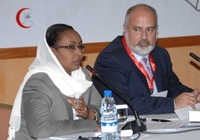
H.E Hasna Barkat Daoud, Minister of Youth, Sports and Tourism, Djibouti (left) chairing a session with Mr Elie Aaraj, President of the Regional Network of AIDS NGOs in the Middle East and North Africa
Credit: UNAIDS
Countries in MENA received approximately US$ 431 million from the Global Fund over the last four years. Recommendations for the revitalization of the national AIDS response in MENA were discussed in several different sessions and working groups and were recapitulated in the closing ceremony.
The universal access goal
“We are all aware that we are far from having achieved the universal access goal to make HIV prevention, treatment and care accessible for all those in need by 2010,” said Jihane Tawilah, WHO Representative and Chairperson of the UNAIDS Theme Group in Oman.
“In 2007, an estimated total of 150,000 people living with HIV were in need of antiretroviral therapy in the region. Those who received the therapy were only six per cent of this number, which is considered the lowest coverage rate among the WHO regions globally,” she added.
The priority in the region is to apply effective preventive intervention strategies and to increase the antiretroviral therapy coverage, she said, adding: “This will require re-examining our policies and practice and redirecting accordingly our efforts and resources to where we can achieve our universal access targets.”
Dr Chahil-Graf also highlighted the need to raise awareness about AIDS among the sections of society not yet reached by HIV prevention information.








